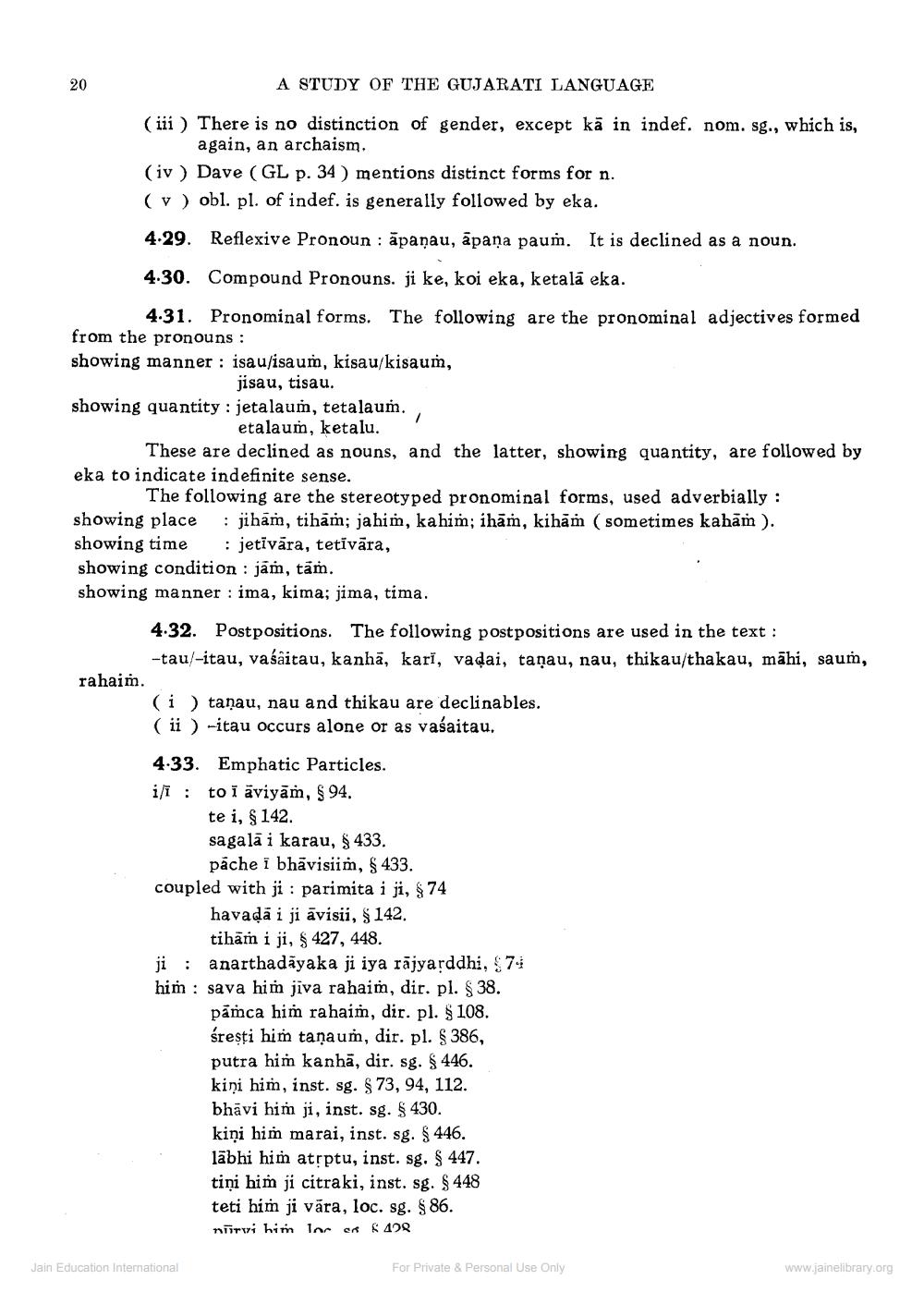________________
20
A STUDY OF THE GUJARATI LANGUAGE
(iii) There is no distinction of gender, except kā in indef. nom. sg., which is, again, an archaism.
(iv) Dave (GL p. 34) mentions distinct forms for n.
(v) obl. pl. of indef. is generally followed by eka.
4.29. Reflexive Pronoun: apanau, apana paum. It is declined as a noun.
4.30. Compound Pronouns. ji ke, koi eka, ketala eka.
4-31. Pronominal forms. The following are the pronominal adjectives formed from the pronouns :
showing manner: isau/isaum, kisau/kisaum,
jisau, tisau.
showing quantity: jetalaum, tetalaum, etalaum, ketalu.
These are declined as nouns, and the latter, showing quantity, are followed by eka to indicate indefinite sense.
The following are the stereotyped pronominal forms, used adverbially: showing place : jiham, tihām; jahim, kahim; ihām, kihām (sometimes kaham). showing time : jetlvāra, tetivara,
showing condition: jam, tām.
showing manner ima, kima; jima, tima.
rahaim.
4.32. Postpositions. The following postpositions are used in the text: -tau/-itau, vakitau, kanha, kari, vadai, tanau, nau, thikau/thakau, mähi, saum,
(i) tanau, nau and thikau are declinables. (ii) itau occurs alone or as vasaitau.
4-33. Emphatic Particles.
ii to i aviyām, § 94.
te i, § 142.
sagala i karau, § 433.
pache I bhāvisiim, § 433.
coupled with ji parimita i ji, $74
havada i ji avisii, § 142.
tiham i ji, § 427, 448.
anarthadayaka ji iya rajyaṛddhi, £74 sava him jiva rahaim, dir. pl. § 38. pamca him rahaim, dir. pl. §108. śresti him tanaum, dir. pl. § 386, putra him kanhã, dir. sg. § 446. kini him, inst. sg. § 73, 94, 112. bhāvi him ji, inst. sg. § 430. kini him marai, inst. sg. § 446. läbhi him atṛptu, inst. sg. § 447. tini him ji citraki, inst. sg. § 448 teti him ji vāra, loc. sg. §86. nirvi him lar en
408
ji
him
Jain Education International
For Private & Personal Use Only
www.jainelibrary.org




